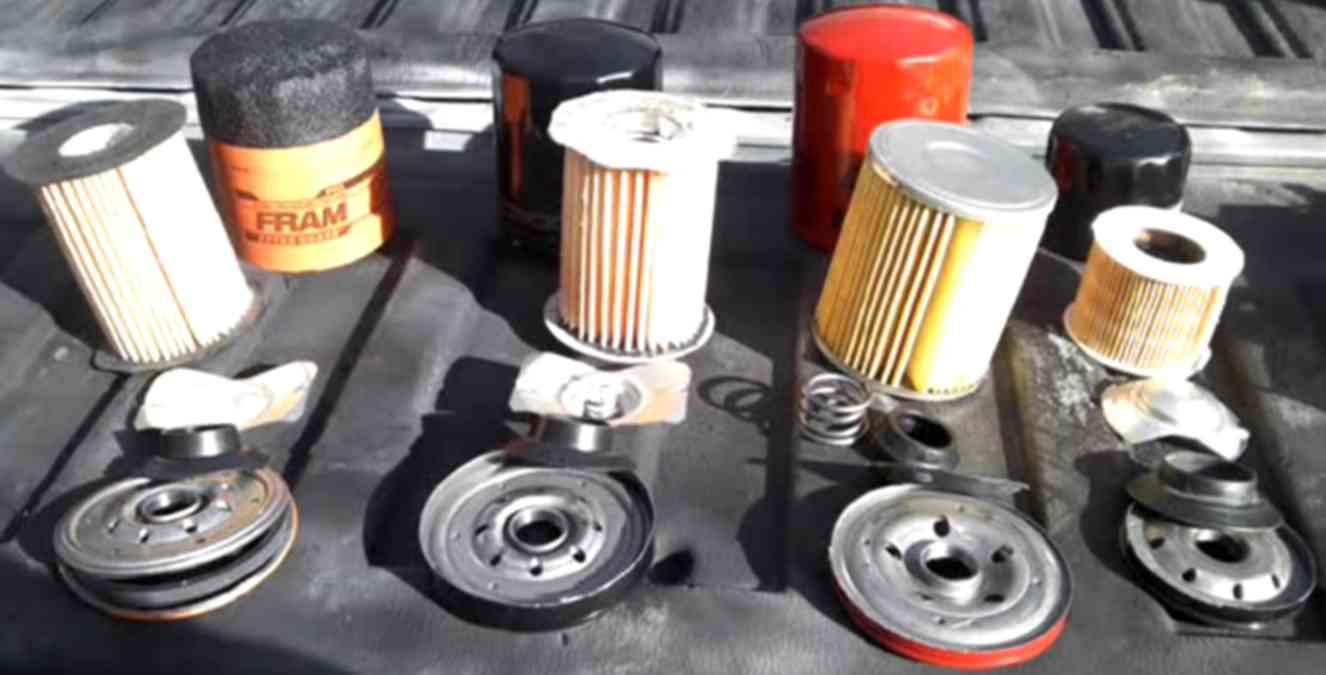Oil filters keep small bits of material which could damage the engine from recirculating through the engine's oil passages. They are usually found at the bottom of the engine, and near the oil pump and/or cooler.
How Oil Filters Are Made

Canister-type oil filters (as seen in the video above and the image at the right) are put together by inserting a filter element into a metal cup, sealed with a metal cap which has the threaded portion to screw on to the engine. The filter element within often sits on a spring if an anti-drain-back valve is included.
Cartridge filters are just the filter element sometimes combined with fitting pieces.
How to Read an Oil Filter Date Code
First you need to find the date code! An oil filter date code is often printed on the end of the metal can or on one of the end caps in a cartridge filter design. In some cases, you may need to use an ultraviolet light to reveal the date code printing. Different brands will use different layouts, but you should be able to pick out the year among the numbers, and if you're lucky, the day of the month will be higher than 12, so it won't be difficult to tell if the month or day comes first.
How to Read a Purolator Oil Filter Date Code
The same format is used for the basic red can Purolator oil filters, as well as the "One", "Tech", and "Boss" oil filters. "F08M04G2" is a code that will be used in this example, but the code should follow the format of letter, two digit number, letter, two digit number, letter, and single digit number.
- F = Fayetteville, North Carolina Plant
- 08 = Month (August)
- M = Year starting with 2009 for A, but skipping I, O, Q, V, W, X, Y, and Z (M being 2020)
- 04 = Day of the month
- G = Production line number
- 2 = Shift number
So the above code taken from a Purolator One PL14006 was produced in Fayetteville, North Carolina on August 4th, 2020, on production line G, second shift. Although the skipped year letters make things difficult, most of them are skipped because they appear too close to numbers or other letters, such as "I" looking like the number one.

- List: Oil Filter Data
- Motor Oil
- How to Change Oil
- How to Install Cartridge Oil Filters
- Automatic Transmission Filter
